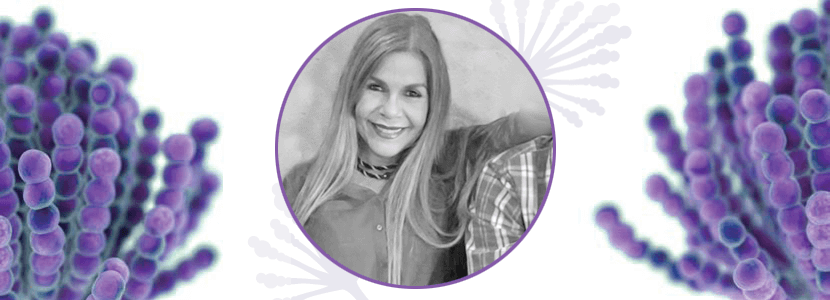Content available at: Español (Spanish)
Marta Jaramillo is a Veterinarian with a MSc degree in Poultry and Swine Production Systems and a Doctorate in Agricultural Science. Having received her education as a Scientific Researcher at the National Agricultural Research Institute (Fondo Nacional de Investigaciones Agropecuarias – FONAIAP-Venezuela), she has more than 30 years of experience in structuring, conducting and developing basic and applied poultry research projects, having worked in the field of Mycotoxicology for the last 28 years. Since 2005, she has been working as an independent consultant in poultry integration systems and animal feed mills in Venezuela, as well as on an international level.
YOU HAVE SPECIALIZED IN THE STUDY OF MYCOTOXINS AND THEIR EFFECTS ON POULTRY HEALTH AND PERFORMANCE. IN YOUR OPINION, WHICH ARE THE MAIN MYCOTOXINS THAT CURRENTLY POSE A THREAT TO POULTRY IN YOUR REGION?
Your question is very important, but to respond, I should emphasize that currently, we cannot speak about mycotoxins detected individually in raw materials as there is a very high probability of finding two or more mycotoxins as natural contaminants in these materials, or in a certain feed, and this is something that occurs in the real world.
On one hand, we must always consider that different genera of toxicogenic molds appear simultaneously in nature as natural contaminants, producing different types of mycotoxins.
While on the other hand, we must keep in mind that the presence of just one genus of mold with potential toxicogenicity can be enough to produce several mycotoxins.
Based on this reality, during the last 10 years, I have observed that the results of the analysis of corn (Zea mays), grain sorghum (Sorghum bicolor (L) Moench) produced in Venezuela and in imported corn, reveal a trend towards an increase in the incidence of fumonisins B1 and B2 that contaminate these substrates, normally together with aflatoxins, which makes it worthy of noting that these continue to be very harmful to poultry.
Deoxynivalenol (DON) and Zearalenone are also present, but with lower incidences.
Additionally, in studies that we have conducted in grain sorghum containing condensed tannins (CT), we have isolated the mold Phoma spp. that produces unidentified toxic metabolites capable of producing teratogenic effects and up to a 41% of embryonic mortality in poultry during the incubation phase.
HAVE YOU SEEN A CHANGE REGARDING THE OCCURRENCE OF THESE MYCOTOXINS COMPARED TO THE PAST? IF SO, COULD THIS BE DUE TO CLIMATE CHANGE OR HUMAN ACTION?
At a global level, there have been some interesting changes regarding the mycotoxins with the highest incidence found in the field as natural contaminants.
In the case of Venezuela, we have observed that the mold Fusarium verticillioides, formerly known as Fusarium moniliform, widely distributed in tropical and subtropical areas and with the toxicogenic potential to produce fumonisins B1, B2, and B3, has shown a high incidence in corn and grain sorghum with and without CT. In Venezuela and other countries, these cereals are the basic ingredients for feed formulations destined for use in breeders, broilers, and layers.
However, in Venezuela, the mold Aspergillus flavus, capable of producing aflatoxins, continues to appear with a high incidence and simultaneously with F. verticilloides, as a contaminant in these cereals.
The question that we should ask ourselves is: What effects do the interactions between these mycotoxins produce in poultry?
This is something to be discussed another time so as not to move away from the subject matter. In any case, I would like to leave you with this conundrum, that should not be forgotten because it is what we should focus on if we want to interpret the clinical cases in the field.
Furthermore, among these changes, we have also observed a higher amount of fungal mycobiota, expressed in the percentage of internally colonized grains where we have quantified total molds, genera and some species of molds, in grain sorghum containing CT.
Among these genera Phoma spp., Fusarium spp., Aspergillus spp., Curvularia spp., Colletotrichum spp. and Eurotium spp. have the highest incidence.
Therefore, we have natural multi-contamination with several molds, most of them producing known mycotoxins and others producing toxic metabolites that need to be studied in depth.
Additionally, in many cases, we have observed that the concentration of total aflatoxins currently exceeds 20 μg/kg in sorghum with TC. This contrasts with the low, very low or no aflatoxins found in sorghum in the ‘80s and ‘90s, which is a clear evidence of change. On the other hand and regarding your question, I consider that the Climate Change we have and are experiencing has influenced, and will continue to directly influence the changes in the frequency of mycotoxin occurrences that we already know of, as well as the emergence of new fungal metabolites with unknown potential toxigenicity. Additionally, human action has also played a role. With or without knowing their drastic consequences, humans; due to Climate Change, have adopted inadequate measures for managing crops in agricultural processes and, among these, I would like to highlight inappropriate use of insecticides and fungicides.
Thus, the macro- and micro-environmental conditions, the nutrient profile and the ecosystem, including the soil microbiota and macrobiota, have been affected in such a way that we have lost the balance among this trinomial.
These two realities that we are subjected to at a global scale, Climate Change and Human Action, have been decisive in triggering mechanisms in the soil micro & macrobiota, that can be associated with genetic mutations that ensure their survival when faced with an…
To read the full interview visit mycotoxinsite.com

